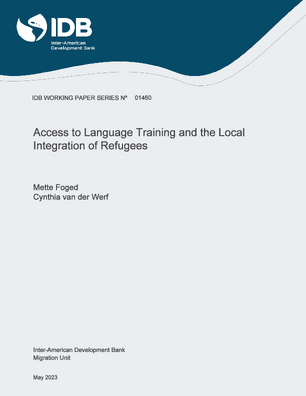Access to Language Training and the Local Integration of Refugees
Date
May 2023
This paper examines whether language classes raises refugees' language proficiency and improves their socio-economic integration. Our identification strategy leverages the opening, closing, and gradual expansion of local language training centers in Denmark, as well as the quasi-random assignment of the refugees to locations with varying proximity to a language training center. First, we show that refugees' distance from the assigned language training center is as good as random conditional on initial placement. Second, we show that a one-hour decrease in commuting time increases total hours of class attended by 46 to 71. Third, we use this novel identification strategy to show that 100 additional hours of language class increases fluency in the Danish language by 8-9 percent, post-language training human capital acquisition by 11-13 percent and improve the integration of the refugees in the communities where they were initially placed, as measured by the lower exit rates from those same communities and an almost 70 percent reduction in mobility to the largest, most immigrant-dense cities in Denmark.




